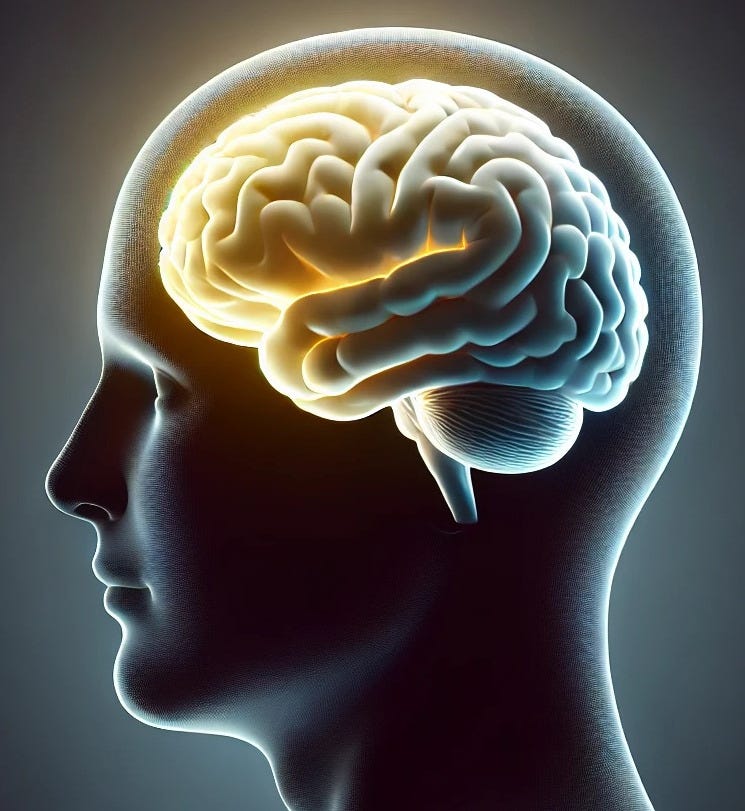Disruptive Change and Organisational Success (PART 2 of 3)
Why Leaders Need Neuroscience to Lead Effectively Today
In PART 1 we discussed clarity of mind in a VUCA world, the stress response, Daniel Kahneman’s System 1 and 2 thinking, the illusion of increased workplace productivity and how stress impacts creativity and decision-making.
In PART 2 we’re going to address what the aviation industry can teach organisations, cognitive flexibility and habitual cognition, neuroscience basics for organisations, and more about what stress does to the brain but good news to counter it - using our body and mind.
PART 2: The aviation industry has lessons for organisations
Whether entirely due to chronic stress, or from having too many things to focus on in a limited time period, the aviation industry has weighed in on what happens to the brain when it doesn’t pay attention to what is required to ensure safety.
Wickens refers to ‘breakdowns in task management and prioritisation’ as being well-known antecedents to aviation mishaps. (1)
Researchers in this area refer to a collection of related factors that impact decision-making negatively as ‘attentional- or cognitive-tunnelling’.
Both ‘attention’ and ‘cognition’ can be used in this regard as attention can be directed towards cognition (inwards) and events in the environment (outwards).
This explanation is useful for non-aviators too, when we consider it in light of what happens in a situation where our options are not clear and we are in uncertain territory.
We may pay close attention to information and/or an event/activity for longer than is optimal which carries a cost as we may neglect attending to, or acting on, other information and/or events that are pertinent to the situation. In other words, we become locked into a specific idea and/or action and neglect other ideas and/or actions that need concurrent attention.
From car accidents while using mobile phones to an analysis of the Three Mile Island nuclear power accident, the researchers suggest that ‘attentional- or cognitive-tunnelling’ is responsible for many mishaps due to the brain locking into a specific pattern of thought.
We seem to lose the capacity to jump between ideas and/or actions, but what we pay attention to, and what we ignore, can hold devastating consequences.
On 28th December 1978, United Airlines Flight 173 ran out of fuel while troubleshooting a landing gear problem, and consequently crashed in a suburban Portland neighbourhood, killing 10 people on board. (2)
The National Transportation Safety Board (NTSB) determined the following probable cause: The failure of the captain to properly monitor the aircraft's fuel state and to properly respond to the low fuel state and the crewmembers’ advisories regarding fuel state. This resulted in fuel exhaustion to all engines.
The pilot’s inattention resulted from preoccupation with a landing gear malfunction and preparations for a possible landing emergency.
The NTSB also determined the following contributing factor: The failure of the other two flight crewmembers either to fully comprehend the criticality of the fuel state or to successfully communicate their concern to the captain.
This accident prompted the advent of CRM (Crew Resource Management) in the aviation industry. Recognition that the captain, who was often perceived as “God in the cockpit”, was not infallible.
Numerous investigations into aviation accidents and incidents revealed that other members of the crew had recognised issues or had concerns about unfolding events, yet failed to raise them, or failed to challenge the captain when he spoke and gave his view.
“God” had spoken, who were they to challenge, and many did not live to regret keeping silent.
Application of learning led to safer flying
The incorporation of CRM into aviation training saw a massive drop in accidents and incidents, enabling all crew members to feel they had an equal voice and should operate more as an effective and collaborative team with a focus on safety and operational effectiveness, rather than blindly following the word of the captain.
The success of CRM quickly saw it incorporated into other high risk team environments such as the fire service and operating theatres, where fire chiefs and surgeons were now effectively supported and challenged by their teams; again, with improved outcomes and reduced stress levels.
Why does CRM work?
CRM prevents the negative impact of confirmation bias and the bandwagon effect, encouraging individuals to think differently, conduct rapid analysis, and assimilation of data and what has been witnessed, without jumping to conclusions or creating mental shortcuts, heuristics.
While others may jump to conclusions, it is paramount to not go along with what might appear obvious, but to have an ability to apply critical thinking,
In this way it also prevents groupthink and oblivious compliance.
This vital capability can greatly assist with problem solving and analysis, enabling effective challenge whilst considering multiple inputs and possible solutions.
Research has shown that our cognition and behaviour change, based on what’s happening in our environment. Harsh and unpredictable environments elicit more impulsive and vigilant behaviour, wherein we discount the future more.
In other words, we shift our attention and focus to the present over the future.
In addition to commenting on this well-researched phenomenon, Frankenhaus and colleagues examined whether people from supportive environments exposed to harsh and unpredictable environmental cues would respond similarly, and they found that indeed, they also shifted towards a present-focused orientation. (3)
How does this knowledge help us?
Our environment elicits a biologically driven response to focus on a narrow period of time, wherein we may ignore the possible consequences of our decisions.
When we are exposed to unpredictable conditions such as what many people would argue we are exposed to in our modern world, we may make poor decisions due to a biologically driven set of mechanisms that we are unaware of, which lie deep within our neural tissue.
More evidence …
Swabe and Wolf found similar results in their research, wherein a reduction in cognitive flexibility increased habit-directed learning and perseveration, defined as ‘continuous and repetitive behaviour, speech or thought that occurs due to changes in cognitive skills, such as attention, memory and mental flexibility.’ (4)
How does this research help us navigate our way forwards while we’re living with uncertainty?
Being aware of our natural tendency to revert to habitual thoughts and behaviour under specific circumstances can stop knee-jerk responses while we step away from a challenge/s to facilitate a different perspective.
The reasons why we need to think differently in the workplace are evident, whether you’re an airline pilot or firefighter, a software developer or business owner – the decisions we make are vital to ensuring successful outcomes.
So, now that we understand why we need to think and behave differently, let’s learn more about the brain. Like any tool, instrument, or weapon, the better we understand it, the more effectively we can employ it.
Neuroscience basics for organisational use
Decision-making demands coordinated brain activity across several regions and systems, including but not limited to the prefrontal cortex (PFC), and working- and long-term memory.
Without the PFC’s involvement, decisions couldn’t be made as it uniquely can analyse and manipulate information to create new ideas, solve challenges and assess the short- and long-term consequences of specific actions.
When the PFC functions optimally, it supports optimal cognition because it can quickly sort through vast quantities of data, access and compare relevant memories with this data, and adjust ideas accordingly.
This results in agile, flexible, creative, and innovative thinking.
Therefore, our PFC is our enabler to Applied Critical Thinking (ACT).
Here’s a list of some of the PFC’s activities that we mostly take for granted, which it accomplishes using abstract and concrete concepts, via external and internal input:
PFC Activities:
Abstract thinking
Inhibiting behaviour/thoughts
Consequential thinking
Innovating
Creativity
Organising data and information
Data analysis
Pattern detecting
Decision-making
Prioritising
Executing plans
Problem solving
Goal setting
Reasoning
The greediest part of our greedy brain
The sensitivity and sophistication that this neural real estate provides isn’t without cost.
The brain uses approximately 20% of the energy we consume, despite being only 2% of body weight; the PFC however, which comprises less than 10% of whole brain volume, uses 25% of this 20%+, making the PFC the brain region with the highest energy demands.
The high energy demands of the PFC stem from increased neural connectivity due to a lack of automaticity as novel neural activity requires novel neural connections.
In other words, if you've never faced the exact same situation before, the PFC, which includes your working memory, needs to assess, analyse, entertain novel ideas, and imagine outcomes and consequences (predicting) before deciding what to do.
In a world of exponential change, with a significant lack of (if any) examples from history to rely on for guidance on how to deal with current challenges, most people are relying on their PFC to come up with novel solutions to often poorly understood challenges.
As mentioned, chronic stress supports the establishment of habitual thoughts and behaviour, and does so via the effects of stress hormones, specifically cortisol, on PFC activity.
Dendritic retraction and reduced spine levels, which translates to diminished neuronal communication, and opportunities for such, are the result of excess cortisol exposure. (5) (6) (7)
Our emotional ‘lighthouse’ stays active
There is also an increase in amygdala activity, with this area of the brain acting like an emotion ‘light-house,’ alerting the brain to possible threats, via fear and vigilance, which also limit creative decision-making.
How often do we see people operating under fear in the workplace?
How vigilant are people when working in groups, speaking in front of others, always wary of who is around them and what is said?
Is it any wonder that creativity and quality decision-making is lacking?
Many talk of ‘psychological safety’ but we know it is often lacking in the workplace.
A brain that is constantly inhibiting words and behaviours due to vigilance cannot, firstly, be creative and make sound decisions, but secondly, is using up more energy than a brain that is calm and focused on the task at hand.
Keep in mind that inhibition is primarily a PFC activity, which means that if an inordinate amount of neural energy is aimed at inhibition, less energy will be available to accomplish other PFC activities such as analysing data, assessing consequences, decision-making and creativity, etc.
In addition, the hippocampus is also negatively impacted, with dendritic retraction and neuronal death occurring when hippocampal neurons are exposed to cortisol for long periods of time.
This leads to both poor recall (memory retrieval) and poor memory consolidation.
This can result in a huge challenge for leaders who have exceptional knowledge and skills to use in organisations which need their expertise, but, due to chronic stress, aren't able to put this expertise to use optimally.
More bad news - but good news to action too!
When we are anxious or stressed we also engage in more internal chatter, which is generally a negative dialogue we have with ourselves about the challenge/s we are facing.
Unfortunately, this internal chatter interferes with our focus and attention and therefore our PFC activity, just when we need it to support optimal cognition.
Humans naturally have a negative bias, because it was better to assume the noise in the jungle was a tiger versus disregarding it.
This is why negative internal chatter is more prevalent versus a ‘Pollyanna’ dialogue.
Our internal chatter can derail clear and focused decision-making.
Apart from our cognitive ‘chatter’, our body also has capacities that can be thought of as unconscious ‘chatter.’
To understand this better let’s examine two human capacities we seldom think of:
1. Proprioception is our body’s inherent and unconscious ability to sense our actions, movements and the position of our body in space. If we didn't have this sense we’d have to consciously think about each movement before we actioned it.
2. Interoception is our ability to sense our internal state of being, for example, what our heart rate is, whether we’re hungry or not, and how we’re breathing.
When we are stressed, our body engages muscles and emotions without us being aware of it, via the complex interplay between our emotions and our thoughts.
When we’re stressed, our body responds without us being aware of these shifts in our muscles, our heart rate, and our breathing.
Even our vision changes – our eyes narrow and our peripheral vision becomes limited.
We don’t just lose the capacity to see the big picture physically, our thinking also narrows and we only focus on what’s right in front of us.
Our thinking becomes myopic.
However, when we physically step away from a challenging and stress-inducing conversation or situation it affords us psychological distance too because it provides a pause, a moment for reflection.
This is why it is a good idea to take a physical break when we’re faced with a challenge – our body and brain get a moment to reflect, and we can have a creative breakthrough after a break, because we’ve allowed our brains to take a breath, step back and see the bigger picture.
We can more easily connect dots from a distance, can’t we?
As Anne Murphy Paul states in her book The Extended Mind, ‘The way we’re able to think about information is dramatically affected by the state we’re in when we encounter it.’ (8)
It’s therefore helpful to become more adept at picking up cues from our body, increasing our interoceptive awareness, so that we’re better able to step back and stop forcing ourselves to simply ‘grit the stress’ out.
In PART 1 we discussed clarity of mind in a VUCA world, the stress response, Daniel Kahneman’s System 1 and 2 thinking; the illusion of increased workplace productivity; how stress impacts creativity and decision-making.
In PART 3 we will address solutions to drive success in organisations, ‘unbound’ / ‘distributed’ cognition, Modern Burnout, feelings vs cognition and how the next generation is coping with life.
References
(1) Attentional Tunneling and Task Management. Christopher D. Wickens; (2005).
(2) https://www.ntsb.gov/investigations/AccidentReports/Reports/AAR7907.pdf
(3) Frankenhuis, W.E. et al. (2016). Cognition in harsh and unpredictable environments. Current opinion in psychology, 7, 76-80.
(4) Schwabe L, Wolf OT. (2009) Stress prompts habit behavior in humans. J Neurosci;29(22):7191-8.
(5) Bruckmaier M, et al (2020) Attention and Capacity Limits in Perception: A Cellular Metabolism Account. Journal of Neuroscience; 40:35;6801-6811.
(6) Blazey T et al (2019) Quantitative positron emission tomography reveals regional differences in aerobic glycolysis within the human brain. J Cereb Blood Flow Metab;39(10):2096-2102.
(7) Woo E et al (2020) Chronic Stress Weakens Connectivity in the Prefrontal Cortex: Architectural and Molecular Changes. Chronic Stress, SAGE; 5:1-22.
(8) Annie Murphy Paul (2021) The Extended Mind: The Power of Thinking Outside the Brain; Mariner Books.












Thanks for sharing with your community @Brian “Ponch” Rivera - here’s to many more people taking time to read about thriving in a complex world!